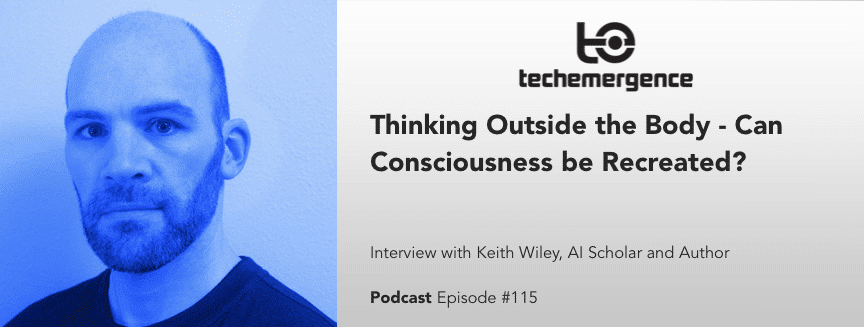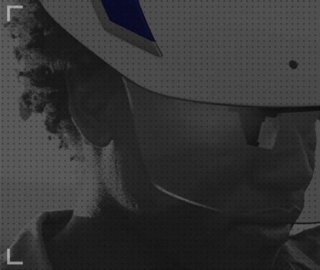
Episode Summary: Could we one day upload ourselves into a computer or chip? Dr. Keith Wiley thinks that one day, we might be able to replicate consciousness within another entity. In this episode, he speaks to us about why uploading human identity in a computer substrate might be possible in the coming decades, and the type of progress we’re making today in the areas of computing and mapping the brain.
Guest: Keith Wiley
Expertise: Computer Science
Recognition in Brief: Keith Wiley received his PhD in Computer Science from University of New Mexico, where his research led to the development of Druid, a vector drawing program that makes it easy to construct and manipulate images on interwoven surfaces. He has held research and consultant roles at the University of Washington, Slalom Consulting, and Expedia. He is the author of A Taxonomy and Metaphysics of Mind-Uploading.
Current Affiliations: Senior Software Engineer at Atigeo
Housing Minds Outside of the Brain
Will we ever be able to house minds in a substrate outside of the brain? Many researchers are pessimistic, but there is another camp of researchers that believes the idea – in theory – is possible. Keith Wiley is a believer, though he is also adamant about the fact that science is not close to accomplishing such a feat.
“From a research point of view, we haven’t figured it (consciousness) out solidly,” says Wiley. Philosophically, the main lines of argument have advanced; John Searle, a reputable Philosopher of the mind, is known for his argument for biologically-based consciousness, and was generally resistant to the idea that consciousness could be meaningfully generated outside the brain. Penrose and Hameroff – who Wiley states may or may not be against the idea – agree that consciousness, if it can be produced at all, requires quantum phenomenon.
The two questions that often arise in philosophical discussion are 1) Can consciousness occur from nonbiological systems like computers? – and on a very different plane, notes Wiley – 2) Can an individual person’s identity (he suggests ‘consciousness’ is not the ideal choice of words) that stems from the biological brain be, in some sense, re-associated with another system? There are a whole spectrum of options. “Maybe we can conceive that the first can be done, but the second could not (potentially) be accomplished,” suggests Wiley.
Nevertheless, it would seem logical that buying into the first question be a pre-requisite to the other. “I’m on board with both,” says Wiley; however, the real conundrum is that “we don’t really know what consciousness is.” One of the prevailing theories is that consciousness arises from complex networks of information passing networks configured in the “right” way; we just haven’t figured out why or how these networks operate.
One argument given by critics is that to even suggest scientists could reproduce consciousness is to rely on ‘magic’. Keith admits that the question of how and why consciousness works is a really great question that lies before us, but he argues that we can still take the position that it does somehow arise from this intricate neuronal connection in the brain.
If brains can make minds, should we adopt the position that other physical systems could be included in this potential? It’s what the brain’s doing that matters, in the “verb” sense of the word, says Wiley. “It’s hard to come up with reasons that other systems shouldn’t be deemed in the same way,” he remarks, noting that it’s the resulting behavior and function, and not the biological materials, that point to consciousness.
Consciousness Outside the Body? That’s Far Out
The ability to create or to even transfer consciousness remains a technology of the distant future, a point that Wiley emphasizes time and again. “We’re just at the beginning of a tremendous project…the progress made so far has been the bare initial stepping stones.” No one has really proven anything new in the last decade on the question of whether consciousness can be produced by artificial systems or whether identity can be interpreted into new system.
Nevertheless, part from personal identity and intangible consciousness, there has been some definitive lab work done in making sense of brain function and even in attempting to replicate these systems in artificial ways. Wiley describes the Open Worm project, which takes ongoing research on the C. Elegans Nematode, and whose connectome was successfully decoded a few decades ago. Specifically, computer models of this connector have been engineered in a software system, which was then uploaded to a nematode physical model in the form of a lego robot.
“One can philosophically ask, ‘have we uploaded a worm?’ It’s a question that doesn’t mean anything in our current neuroscience,” says Wiley. But from a technical point of view , the strides made in the past decade in neuro scanning techniques, growing neurons on chips, and modeling neuronal functionality, is where the great work is being done. And this progress is being mirrored in the field of computer science.
Neuromorphic chips are a new innovation in the field of computing, and one that works more similarly to how the neurons in our brain function than in classical computer chips. “It’s a step in the direction of creating chips that are more brain-like,” Wiley states. Projects such as the Blue Brain and others are using thousands of processors to model brains. Despite the epic journey ahead, Wiley remains optimistic in the continued and accelerated progress of mapping the human mind. “This is a new thing…we didn’t have the economic or political incentive in the past for brain mapping,” says Keith. But the tides are starting to turn.







